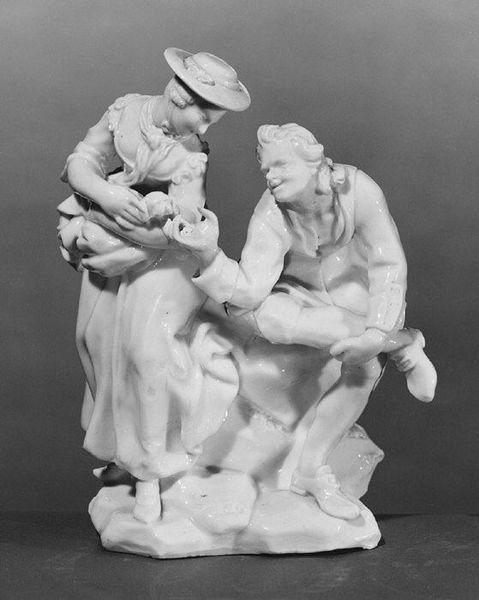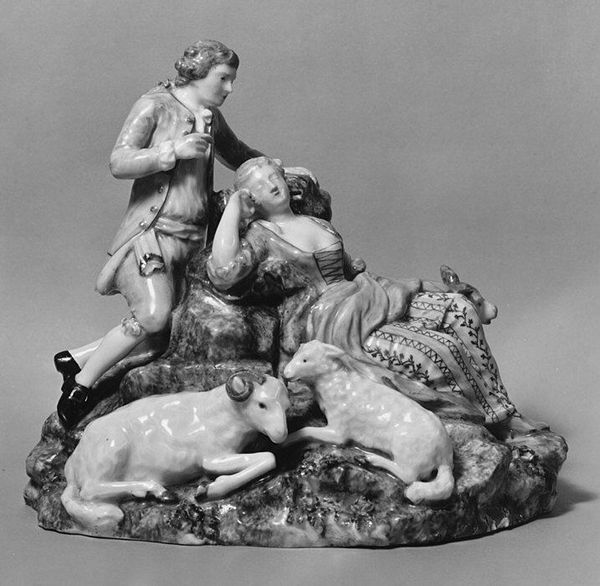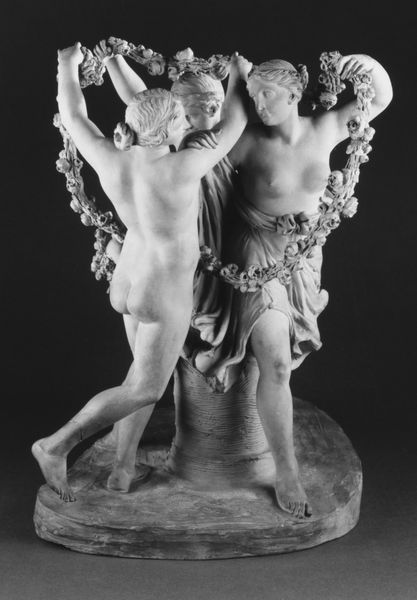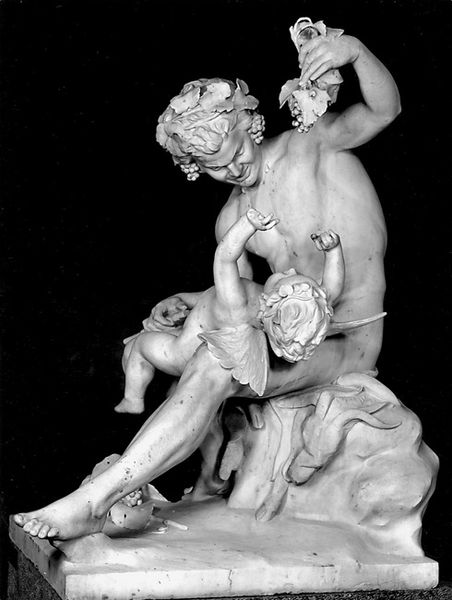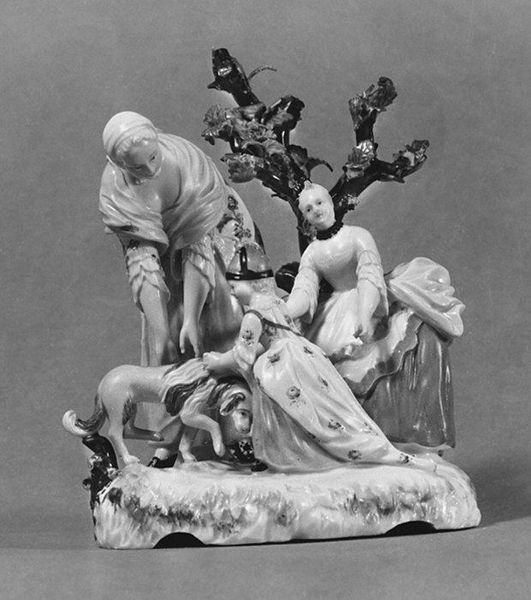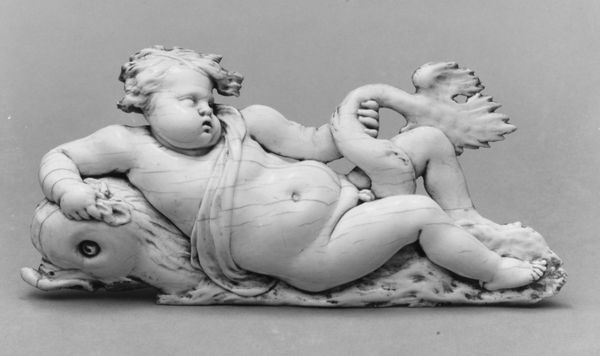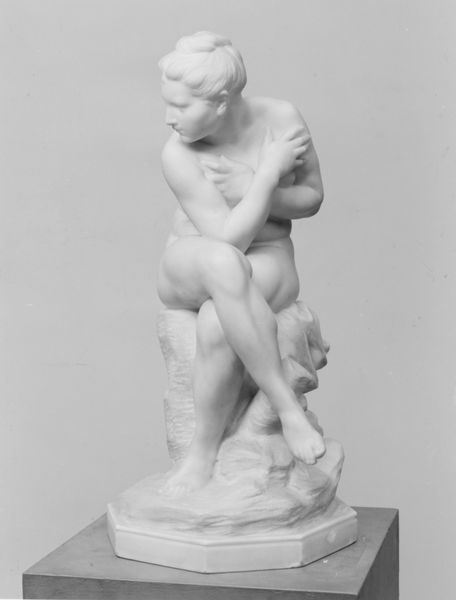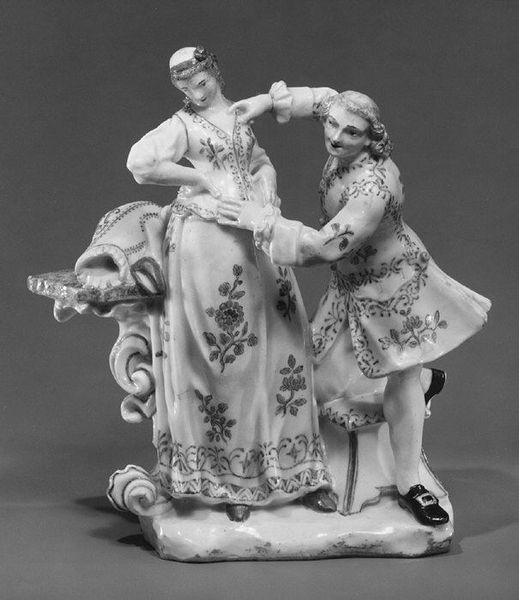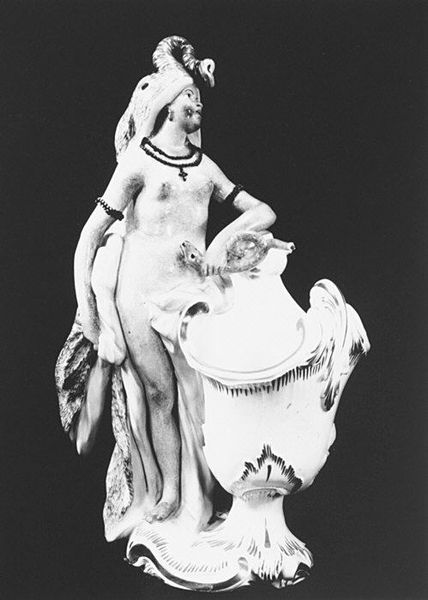
ceramic, porcelain, sculpture
#
allegory
#
sculpture
#
ceramic
#
porcelain
#
figuration
#
sculpture
#
decorative-art
#
rococo
Dimensions: Height: 8 in. (20.3 cm)
Copyright: Public Domain
Curator: Looking at this delicate porcelain sculpture, I am immediately struck by a sense of unease masked by a superficial charm. Editor: Right, Friedrich Elias Meyer crafted "Asia and Africa" sometime between 1745 and 1765. The Met calls it decorative art, but I see so much more embedded here. Curator: It’s this unsettling juxtaposition, isn't it? Two cherubic figures astride a rather monstrous beast – an ape, perhaps? It's got this glossy sheen, but the scene reads almost violently to me. I am also drawn to its tactile aspect: a smooth yet deeply expressive work, inviting curiosity and further interaction. Editor: That "beast" as you call it, acts as a visual shorthand for colonial attitudes towards the continents. These cherubs – representing Asia and Africa respectively—are infantilized, their power, potential, or perceived threat, diminished. Meyer made these out of porcelain for a reason, to present an allegorical story about domination in what was seen as an easily controlled and aesthetically pleasing medium. Curator: Domination neatly packaged, indeed. And the rococo flourishes--all those frills. It’s fascinating how aesthetic pleasure can obscure some of the more problematic underpinnings. Editor: Exactly! Rococo’s playfulness, its elegance and charm become a smokescreen. You almost miss the problematic power dynamics being portrayed through each meticulously crafted curve. The figures themselves are based on idealized European notions rather than any authentic representation. Curator: This conversation brings into light how the sculpture reflects a worldview and perhaps invites further introspection on colonial practices that had some connection to this artwork at the time of production. Editor: It does, revealing so much about eighteenth-century European perceptions and biases. By critically examining seemingly harmless objects, we gain insights into historical ideologies that still resonate today. It serves as a stark reminder that aesthetics are never neutral.
Comments
No comments
Be the first to comment and join the conversation on the ultimate creative platform.

